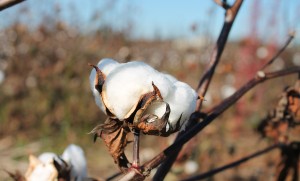
The experiment was conducted near Deming, New Mexico, on a farm that grows green chile peppers (variety AZ 1904). This particular farm was selected because of high parasitic nematode counts and reduced pepper yields. The objective of this product trial was to evaluate the effects of Promax® and Zap®, two leading Huma Gro® products, on controlling soil nematodes and improving the yield of green chile peppers.
During the experiment, Promax® (1 gal/acre) was applied to soil one week before planting on 10 acres. Then Zap® (0.5 gal/acre) was applied shortly after the peppers were planted. Also, nematode counts were recorded before the application of Promax® and Zap® in April and then another recording was taken in June to draw a comparison. Yield was measured for untreated (Check) and treated areas at harvest.
The field trial revealed that the parasitic nematodes were largely controlled by Promax®/ Zap® treatment, while the beneficial nematode population increased. Before treatment, the average counts of Southern Root Knot and Lesion nematodes for the north and south field combined were 307 and 48 (per 100 cc soil), respectively. After treatment, these numbers declined to 14 for Southern Root Knot and to 17 (per 100 cc soil) for Lesion nematodes. The pepper field also witnessed an increase in yield which translated to a 13% higher net gain per acre.
Soil nematodes can be harmful to plant roots and decrease crop yields. Many current treatments involve the use of toxic chemicals that can negatively affect soil. However, Huma Gro® Promax® and Zap® treatment works as a safer and effective fumigation replacement option.
To read the field trial in detail, click here.
Related Posts

This Week in Ag #34
Earl Butz, one of the most famous and popular US Secretaries of Agriculture, once told me that a key competitive advantage for US farmers in the global marketplace is our built-in natural infrastructure. Our Great Lakes and river system is perfectly designed to transport grain efficiently. The Mississippi River is the backbone of our agricultural transportation system: 60% of all grain exported from the USA is shipped by barge down the Mighty Mississippi.

New Fertilgold® Organics Promo Video
There’s tremendous power in nature. What if you could harness that power and put nature’s science to work growing your premium organic crop? To see how, watch this 30-second introductory video for Fertilgold® Organics.

Video: Super Phos + Calcium Mixing Stability Test
English and Spanish subtitles are available. In this video, we demonstrate the unique compatibility of our highly concentrated Super Phos® 0-50-0 product when mixed with calcium. In traditional fertilizers, when phosphorus and calcium are mixed they can precipitate and fall out of solution. The resulting calcium phosphate can clog drip emitters and damage sprayers. Our...

